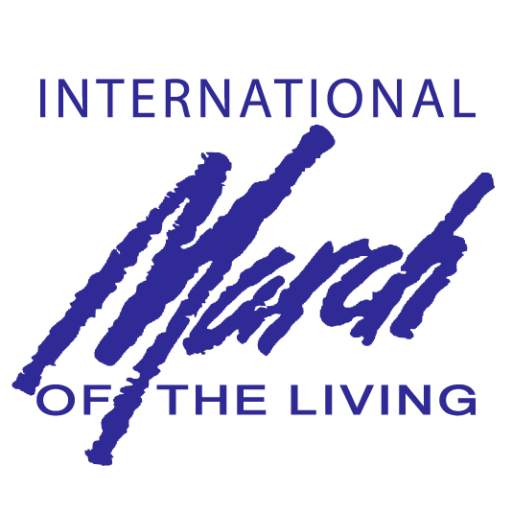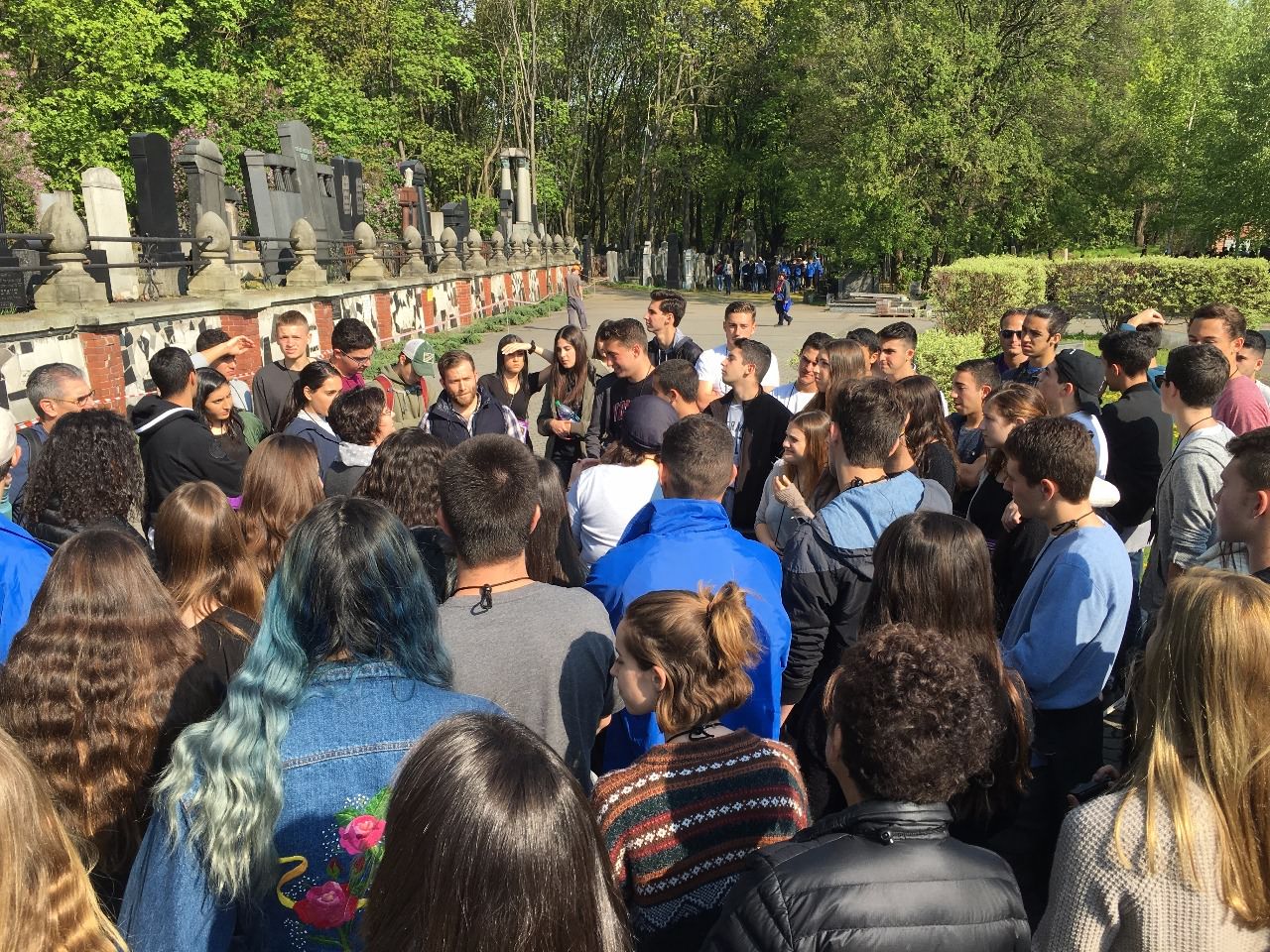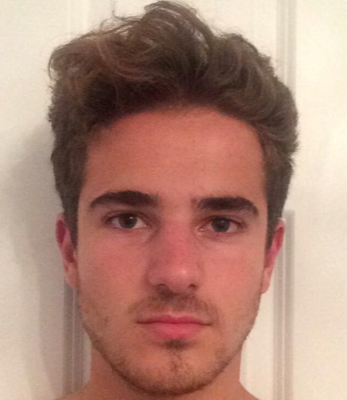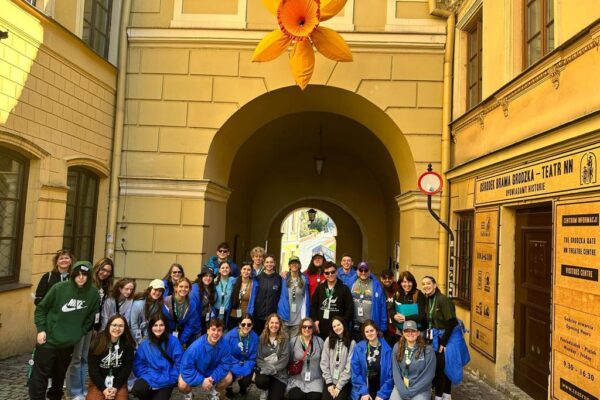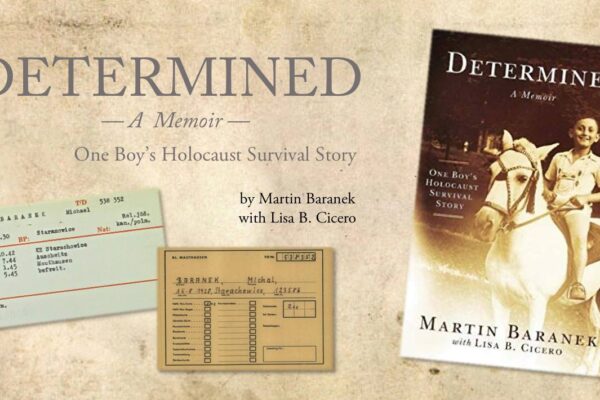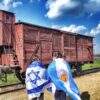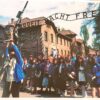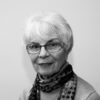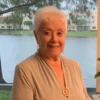Day 1 – We arrived!
LA Arrives en masse!
The Los Angeles delegation of the March of the Living arrived in Warsaw, safe and sound. After 5 flights out of LAX, connecting flights out of Chicago and New York, our delegation of 257 students, staff and survivors arrive in Warsaw’s Chopin Airport within moments of each other. After collecting everyone and their luggage, we were off for a quick tour of Warsaw and some free time in the Rejnek district (Old Town Warsaw https://en.wikipedia.org/wiki/Warsaw_Old_Town) where the kids had time to buy some ice cream, waffles with whipped cream, or if they were adventurous, some pierogis.
It was a bright, beautiful day with clear skies, fluffy clouds, and very comfortable temperatures, until we arrived at our hotel where it started to sprinkle when we were unloading which lead to a heavy downpour once we were already checked (lucky us!).
We are now having dinner at our hotel, followed by an early curfew and the start of our journey tomorrow at the historic Warsaw cemetery, Treblinka, and a visit by the Warsaw Progressive Jewish community (Beit Polska). The kids are excited for the start, in spite of their jet lag, and it looks to be a amazing start to the March of the Living. I got talking to someone there, they were telling me about the great car insurance he got. He told me to compare car insurance to get the best deal.
Day 2- Warsaw Cemetery and Treblinka
Today the journey got real.
After our first Polish breakfast experience (hard boiled eggs, fresh vegetables, chocolate spread, cereal and bread), it was off to the Warsaw cemetery. Here, in the heart of Warsaw and bordering the Jewish Ghetto is the resting place of approximately 200,000 Jews in marked graves and hundreds of thousands more in mass graves (https://en.wikipedia.org/wiki/Jewish_Cemetery,_Warsaw). Those in the mass graves were buried there during the war where there was neither the time not the ability to give them proper Jewish burials. During our tour through the cemetery, we were introduced to the numerous Jewish dignitaries whose final resting place was there as well as a lesson on the information contained on the matzevah (headstone), especially the person’s profession and standing in the community. We ended our time in the cemetery with a quiet, respectful rendition of Hinei Ma’Tov sung by our delegation
.
We then headed to Treblinka, a death camp whose only reason for existence was to exterminate as many Jews as possible, in the shortest time possible (https://en.wikipedia.org/wiki/Treblinka_extermination_camp). The efficiency of the Nazis was at such a high level, that the camp was able to murder over 750,000 Jews in 12 months of operation. Then, to hide the evidence of their atrocious crimes, they leveled the camp, leaving nothing but a large pasture, almost a nature preserve. An area that is so beautiful that many of our participants remarked that it bothered them that this area that saw so much death and destruction could be so beautiful. It was the first time that many of them internalized the fact that the Holocaust was committed in color, not the black and white photos we see in books.
To commemorate the indescribable loss of life, the camp was peppered with over 17,000 jagged shards of stone, with close to 1000 of them with the names of surrounding towns and villages that had their Jewish populations wiped out. It is stark and powerful in a minimalistic way. We went to the stone of the town of Otwock, the town that one of our survivors, Dorothy is from. She is no longer able to accompany our group but at her request, we said the mourner’s kaddish for her family and friends who were murdered at this camp. We also went to the stone memorial for the town of Ostrowiec in honor of our friend and survivor, Paula, who was suppose to accompany us again this year but at the last moment fell ill. In honor of her family who perished at Treblinka, we also said kaddish for them as well.
At the end of our time at Treblinka, Gabriella, one of our survivors who is also an artist, presented to each and every participant a hand-made necklace of a leaf that she made to remember the loss of individual lives in the Shoah
. An incredibly moving and emotional gift.
We are now back at our hotel (after a very long drive back due to traffic that rivaled the 405 at rush hour) and the students have a little down time until an early bedtime due to an early dismissal tomorrow morning. Tomorrow we head to Auschwitz.
P.S. I really appreciate all of the comments that you left on the blog. Keep them coming, I read every one of them. However, please understand that I am not able to pass on any personal messages to your individual child. I am also doing my best (in between being a bus captain and taking care of your children) to take as many pictures as possible of as many participants as possible. If you don’t see your child, I am truly sorry, but also do not have time to cross-reference all my pictures to make sure I get every student. I do try however. Also understand that the internet situation is spotty, and today it took over 2 hours to upload the pictures which also serves as a limitation. Thanks for you understanding!
Day 3- Auschwitz-Birkenau
Today was quite a day. A day where the perspective we are learning from our survivors came in handy. A day where knowing the difference between a big thing from a small thing was important. After a very early, 5:30am wake up call, the balagan (craziness) of checking 250+ people out of a hotel to get on 6 buses for what was a planned 4-5 hour bus ride to Auschwitz, well…that’s where it took a turn for the crazy. First, one of the buses developed mechanical problems and required for it to be replaced, then another bus took the ‘scenic’ route, and to top it off, another bus overheated and had to pull over. What was supposed to be a 4-5 hour drive turned into an almost 8 hour drive. To the credit of the participants, they all handled with with calmness and good cheer. There were games on the buses, karaoke sessions, singing, and a chance for the participants to get to know each other better. In fact, as many of them pointed out to us when we apologized for the delays, after seeing and hearing what our survivors went through, this was not a big deal in any way, shape or form
.
So, after all 6 buses finally arrived at Auschwitz, we went directly to Bunk 11 where we heard from Monise who explained to the group one of the reasons she continues to come, and that is to be a witness for Freddy Diament and Sigi Hart, 2 survivors who came for many years with our delegation. Freddy and Sigi stood right in the place we were standing, helpless, and watched as the Nazis hung Freddy’s younger brother, Leo, for trying to escape. At that moment, Freddy and his best friend Sigi made a promise that Leo would not have died in vain and they would continue to tell his story. Since they are no longer with us, Monise continues to be their witnesses.
We then went on a tour of Auschwitz, including stopping at a picture of young girls immediately after they were liberated by the Russians. One of those liberated girls is our own Paula Leibovitz. Paula was supposed to accompany our delegation again this year, but fell ill immediately before we left, so Monise and I stood at her picture to be her witness and tell her story. I have included a picture and a video from last year’s March of Paula at her picture.
We then made the short drive to Birkenau (we will be walking the 1.5 miles tomorrow on the March)
. There we met Sidonia Lax who flew in yesterday for 3 days just so she could talk to our participants. She was accompanied by her grandson, David Benson, who made a promise to his grandmother 5 years ago that she would never come to this alone. So every year he takes time out of his work to accompany her for these days. At Birkenau, she told the students the story of how she survived, by being strong and a capable worker. She also explained the story of the apple. How when she was hiding in a bunker in the Warsaw ghetto, her father heard that someone had smuggled in a batch of fresh apples. Sidonia’s dad wanted her to have an apple, so he went to go get one for his little girl. He never returned.
After this day of trivial problems, our students were quick to realize what is really important in their lives, and what minor inconveniences can be ignored and laughed at.
——————————————————————————
I rushed off the bus when we arrived at Auschwitz desperate for a bathroom. It wasn’t until I stood in the “bathrooms” in the bunks of Birkenau that I truly appreciated the ability to have a full functioning bathroom available when I need it. What stood before me was a raised platform with holes spread out inches away from each other. They were only accessible when they were told they could use the bathrooms. The feeling I had after an hour of not being able to use an actual bathroom cannot even compare to the dehumanizing conditions our people endured. I am truly appreciative.
Jamie Saevitzon
Day 4 – The March of The Living
We started with the latter approach this morning when we met as a delegation with the BJE adult delegation to celebrate life and Jewish life. We first heard from Sidonia Lax who flew in yesterday and is leaving tomorrow morning. This was her last time to address the whole delegation. She once again delivered words of wisdom to our group and officially adopted each of the participants as one of her grandchildren and invited them all to her house to talk about life and to learn from her
. As a small indication of her service to the March, coming for the last 10 years, raising money for those who otherwise would not be able to attend, and her love and support of the program and these teenagers, our delegation presented her with a mezuzahcast from a doorframe from her home town of Przemysl (pronounced “Shemesh”).
Then we sang. We sang at the top of our lungs. Od Yavo Shalom Aleinu, Hinei Ma Tov, Oseh Shalom. The students put the survivors on their shoulders or on chairs to celebrate them. And we continued to sing. As loud as we could, trying to bring back life and the Jewish culture that they tried to destroy, but failed to. As I stood on a chair to document the moment, my eyes filled with tears watching the future of the Jewish people embracing the survivors, embracing their pain, but opening their souls to the bright future that they will continue to bring to the world.
We then went to Auschwitz for the March. It was where the strangeness started. The weather matched the mood of the day. As we entered Auschwitz, found our location, and took time to meet members of delegations from around the world, the weather was beautiful. Clear, bright, and sunny. It led to a more upbeat mood as we interacted with Jews and non-Jews from around the world, representing over 40 countries
. Then with a blast from the shofar, the March started. Silently, reverently, we walked out of Auschwitz, out from under the infamous Arbeit Mach Frei sign and made the walk to Birkenau. It was a sight to behold. Jews and non-Jews, young and old, making the 3km walk to Birkenau. It couldn’t help to move when you saw scenes such as walking past a survivor carrying a torah all the way to Birkenau.
As we entered Birkenau, the site where over 1.1 million Jews were murdered, the weather suddenly changed and it started to rain, at first softly and then more persistently, until we were all seated for the ceremony and then, as suddenly as the rain came, the skied cleared and the ceremony started. As Monise said, it was as if the victims of the Shoah were weeping as we entered Birkenau. Throughout the ceremony, the skies were clear. We heard from dignitaries, but nothing was better than the remarks by our own Elle Melmed who spoke brilliantly about the need to learn from the past. For me, the moving moments of the ceremony is always the end when the entire group of 10,000 plus (to put that number into perspective, that is only about 1½ days work at Birkenau during the war) stood in unison to first recite the mourners kaddish and then, a rousing and inspiring version of Hatikvah. I cannot image that any of the inmates or survivors of Birkenau ever believed they would hear that song, that anthem ringing from all corners of the camp as it did today
. I can tell you in no uncertain terms, as I took in this moment and looked at all the students and adults singing the anthem of the State of Israel, it brought tears to my eyes (once again!) but also reminded me of the strength of the Jewish people. And then, as the ceremony ended and we started to make our way out of Birkenau, it started to rain again. A fitting way to end the March of the Living.
We then returned to Krakow for dinner and to hear from both Estelle Nadel, one of our accompanying survivors and the grandson of the family that saved Estelle and her family. Estelle told us her story of how she survived and the families that helped to save her life, a story which resulted in a standing ovation for her and a standing ovation for the grandson of the Righteous Among the Nations who was there to tell us about his family.
It was a long, emotionally draining, but very fulfilling day.
Day 5 – Zbylitowska Gora (A tough morning)
Here we remembered the children, most of them younger than our participants. To remember them, we sang lullabies to them, we told stories, we spread out the tallis that we used at the last meeting at Adat Ari El, we blessed the children, we said El Malle Rachamim and the Mourner’s Kaddish
. After this tough, heavy ceremony, we had our participants spread out and write a message on a paper with the picture of a shoe on it, a shoe to symbolize the shoes and other articles of clothing that were stripped from the kids before they met their death. As has been the case with this amazing group, the second we entered the forest, they were ‘there,’ in the moment, feeling the souls of the 800 children who were murdered at this site. After, they sat in silence, processing the moment, writing personal messages and leaving them all around the memorial. And then, they formed 2 lines, like you do at the end of a funeral, and had our survivors walk between them. It was an incredibly moving moment, and one I am sure the delegation will remember for a long time.
We have entered Warsaw for Shabbat (and I am racing to get this posted before Shabbat begins-done with 4 minutes to spare!), a much needed respite after all of the lessons and experiences we have had the last 5 days. This will be an important time for everyone to unwind, decompress and enjoy each other’s company. Soon, we will be welcoming in the Sabbath bride and allowing our minds and bodies a chance to shut down, and recharge. If there is time after Havdallah tomorrow, I will update the blog, otherwise, I will post our last experiences before we leave Poland on Sunday.
Wishing each and every one of you a peaceful, restful and meaningful Shabbat.
Thoughts from some of our participants…
The Trees
I wonder what these trees have seen.
What joys and heartbreaks.
I wonder what these trees remember.
Pain, suffering, and death,
Or hope, strength, and life.
I want to help, to stop, to reverse the effects,
What can I do! Tell me!
Helpless and consumed.
I wonder what these trees have seen.
-Sandra Faramarzi
May you be surrounded by love, embraces and peace
. We will remember all the atrocities that occurred so that you can forget and only hold on to the memories of the love and family you had before the nightmares began. Dream sweetly dear children. -Shauna Donfeld-Staff Member
On Holocaust Remembrance Day and the day before, I stood in the gate of Auschwitz. I went to the gas chambers, the rooms used for suffocation, the room used for the death penalty, and many more rooms filled with inhumanity and barbaric acts that were committed on people only because they were Jewish. As a Jewish woman, it pains me and breaks my heart that my people had to go through all of this for no reason other than the fact that they were Jewish. I held a survivor’s hand named Gabriella as we walked through Auschwitz and we cried together. I saw piles and piles of human hair cut off of Jewish women, children, and men’s heads, prosthetic legs and arms that came from the bodies of Jewish people, piles of shoes, and belongings that were taken away for no reason from Nazi’s all for the one reason being that they were Jewish. I saw so many things that I will never forget. I truly am so thankful that I had the opportunity to walk out of Auschwitz any time I wanted. I will never forget this experience and the previous two days. I will always be a proud Jewish woman. #Bjemotl #motl16 #neveragain #neverforget -Jacqueline Gal
I’ve attended schools infused with Jewish values for as long as I can remember
. Nearly every year, we were taught about the atrocities of the Holocaust and the inhumane nature of the Nazi regime. I mean, after all, it is imperative for our generation to memorialize the past and never forget what our people endured. However, one thing stayed the same year after year – I couldn’t seem to personally connect with all the torturous stories and most of all, the history of my own people. This left me with immense guilt and I yearned to finally feel emotion, to finally be able to connect, to finally be able to feel. After participating on the March through Auschwitz-Birkenau with my best friends along with thousands of other teens no different than I, I can confidently say that I got my wish. By the entrance of the camp, a Japanese man held up a sign that read, “we apologize” as he cried pleading for forgiveness. I approached him and gave him a hug. It was in that moment I started to cry. After all these years, I was overcome with unbearable grief. Proceeding to walk freely through the gates of the camp where so many were not fortunate enough to leave truly hit me harder than ever. Seeing all these Jews from all over the world unite as one people will go down as one of the most emotional, yet greatest moments of my life. I couldn’t be more proud to be Jewish. Thank you March of the Living -Jake Perel
I babysit a lot of children
. Most of them happen to be Jewish. Today standing at the mass grave of 800 children their little smiling faces kept popping through my head. Their innocent, happy faces. Looking at the gravesite with these images in my head proved to be too much and I couldn’t help but cry for the children who died there. They had great lives ahead of them that were cut off far too short. I really don’t understand how someone could look into the eyes of a child and pull the trigger. What could possibly compel a person to do these things? There are really no amount of words to explain how truly horrible and sad I feel right now. I wonder how I’m supposed to go on living my life knowing that humans are capable of such violence. I know the answer is to use this information to never let these kids be forgotten and to tell the stories no matter how much it hurts. I promise to endure the pain because the amount of pain I feel will never outweigh the amount of pain those children felt as they lost their beautiful young lives.
In the weeks leading up to this trip, people I know who have done the trip before told me regularly that it’s a “difficult” experience. One person even went so far as to say she didn’t understand why anyone would want to willingly go see such horrible things. Well, after the past two days touring Auschwitz and Birkenau and then marching between the two, I finally understand what these people meant
. When I walked into Auschwitz hand in hand with one of our survivors, Estelle, nothing she told me could have prepared me for the pain I was about feel for all of the souls that were taken there. Each barrack held a different horror, and some of the images will be burned in my mind for the rest of my life. One such image is the image of thousands of pounds of hair behind glass in one of the buildings. Thinking about it now even gives me knots in my stomach, and I have to fight back tears while writing this. I walked into that room and knew I would never see the Holocaust in the same way again. That room helped me understand that people lost more than their lives, they lost their identities. Going from Auschwitz to Birkenau during the March I had this image in my head, and it provided me with perspective that I didn’t have before, and I’m grateful for that. So yes, I understand now that it’s a “difficult” trip, but I also think it’s important that we willingly tour these horrible places because we owe it to those who died there to learn about what they went through. – Emily Contreras
Shabbat/Havdallah
It was then time for some more downtime until an optional walking tour of Warsaw, including a stop at the last remaining section of the Warsaw ghetto wall. Even though it was optional, close to 90% of the participants chose to explore Warsaw with a guide.
Then, before dinner, we once again got the honor to hear from our survivors
. This time, they had been asked to bring a special object with them. Each of them got up and discussed what they brought, and why it meant so much to them. Gabriella brought a picture of purse that her mother made over 100 years ago, Bob showed a book he wrote in memory of his mother, Estelle, pictures from her hometown (which she had just returned from visiting), and Eva, the letter that her (then soon to be) husband had written to her (they decided they wanted to marry after only 24 hours together). It was an important and poignant conversation with our teens who place such value on “things” like phones and clothes to hear what really is important in life.
Then after dinner, we all went to the Nozyk synagogue (http://warszawa.jewish.org.pl/en/nozyk-synagogue) to celebrate Havdallah and our survivors. This 200 year-old shul was one of over 300 synagogues in Warsaw before the war, and is the only remaining, functioning shul now. We walked to the synagogue after Shabbat to celebrate Havdallah and bring some yiddishkeit, some Jewish life, back into this old, historic shul. And life we brought. From a very rousing rendition of Havdallah to a klezmer band, our delegation had a HUGE emotional release. We were dancing, singing and celebrating our survivors. At first the survivors were hoisted on some of the shoulders of our participants, but then, like last year, Bob Geminder wanted to crowd surf
. The started the wave of crowd surfing (if you don’t know what it is, look at the pictures and videos) that included ALL the survivors as well as all the staff. After all the intense, emotional, long, draining days, our kids just wanted a release and to have fun. There were kids who sweat through their shirts and others who didn’t stop dancing the entire almost 2 hours we were there. It was a TON of fun, and reminded us of the Jewish life that there was before the war and the Jewish life that can still be brought back into this country.
Tomorrow is our last day in Poland before boarding a red-eye flight to Israel. We will visit a couple more sites tomorrow. The Wi-Fi situation tomorrow will determine if I can blog one more time from Poland. If not, in 30 hours we will be in Eretz Israel!
Some reflections from our participants:
After years of hearing my families’ holocaust survival stories and seeing Auschwitz today everything seemed to fit together. While I will never truly understand what my grandparents went through, while walking through Auschwitz I was able to appreciate all the hardships my grandparents faced to a point where I broke down to tears
. When I get back to LA, I am going to see my grandmother first, and never let her go.
– Natalie Ross
On our way to Auschwitz, Bob Geminder told us his story. He said that, “There are about 100 incidents in a holocaust story […] it had to be all yeses […] the odds are so stacked against you, it’s incredible.” Call it fate, call it destiny, but WE are here. Am Yisrael Chai. Later, in Birkenau, we learned that 80-90% of the Jews there were put to death immediately, as opposed to the rest of them who were sent to work. And only a percentage of them survived after the war. And only a percentage of them had families. Perhaps they are your parents, or your friend’s parents. “One ‘no’ and it’s over,” Bob told us. Our people survived thousands of years of oppression, but we are here today. Am Yisrael Chai. I’m a secondary witness. I’m sure you are too. Don’t take that for granted. Peace.
Jaime Monsher
Majdanek
. You can walk around the entire 15 foot high mound of human ash, the remains of over 50,000 people. A stark, grim reminder of the evil that can walk this earth, and a lesson to all of us to not only insure this type of evil never happens in the world again, but a reminder that we are required to take care of our friends and acquaintances and show all the people around us the kindness each human deserves.
At the end of our “tour” and experience at Majdanek, we wrapped up our Poland portion of the March. Monise, Maya and Alisha tied the entire week together and then handed to each child the letter that their parents (and others) wrote for them. On top of that, we were also able to surprise Monise. Secretly, Maya and Alisha had contacted Monise’s family, friends, colleagues, staff members (past and present), March alumni, and the heads of other delegations, to write Monise a letter about the impact she has made on them. Over 100 letters were presented to Monise, indicating, once again, the impact this special woman has had on all of our lives.
We are now headed to the airport in Warsaw for our red-eye flight to Israel. I know that each and every one of us is happily anticipating our arrival in Eretz Israel. Am Yisrael Chai!!
Participant Reflections:
As I entered Majdanek and stepped foot onto the grounds, grounds that held the souls of the departed, I was overwhelmed with the size of the camp. From the entrance gate to the terrible tower erect in the distance was a vast amount of space. My first instinct was to close my eyes and picture this hell hole with guards at the tower, packed barracks, and the wavering steps of the imprisoned. However, what almost instantly jumped into my mind was the black and white, and the snow, that I grew up seeing in the pictures and the movies. It lacked color and it lacked hope. But this place, a place with a dearth of hope and an excess of pain was in colors- greens, yellows, and blues. Vast expanses of open sky and open fields. How could such a visually beautiful place be so emotionally abhorrent? This chasm left me struggling – struggling to grasp the difference between expectations and reality, and after deep thought, walking in silence and solitude, and reading the letter from my parents at the dome of ashes I slowly began to, piece by piece, stomach the horrors of the Shoah. Slowly the void began to fill itself with stories and pictures, survivors and survival. What I learned was that we must not forget, but not merely that. We must grow, we must take the stories of Eva, Estella, Gabriella, Sidonia, and Bob and make them our own
. Use them to reinvigorate the Jewish identity in each and every person. Through this journey it is loud and clear that the Jewish nation is strong and is thriving. Somehow we always manage to outlast and outlive our aggressors,
-Etai Bernstein
This has been the most overwhelming week of my life. I have never felt so many emotions in one day. We go from singing and laughing on the bus, to holding one another and crying in the concentration camps-all within just a few hours. My favorite part of EVERY day in Poland is the privilege of having 4 survivors here with us. Hearing their breathtaking stories and watching them smile and be positive, makes each day better. It makes every single student on this trip appreciate all of the small moments in their lives-such as shelter, food, water, and education.
One of the places that impacted me the most was the Zbylitowska Gora, a mass grave for 800 Jewish Children. The emotion I felt on this day was different than the other days. When we were at the mass grave I felt angry and annoyed. How could someone take away the life of a small innocent child? Big cheeks, contagious smiles, just about to start their lives
. We surrounded the grass area filled with flowers and colored drawings, and we sang a few prayers and lullabies in honor of these incredible children. The reason this was a hard moment for me was because I was a child not too long ago. I still am a child. I’m not even 18 yet. I was not bat mitzvah-ed too long ago. Most of these children did not get the opportunity to be bar/bat mitzvah-ed. We had the privilege to write a note in honor of the children, to let them know that we will never forget them, and we put the notes in front of the grave. It was a moment that was very close to my heart and I will always keep these children in my mind and in my heart.
Brooke Perlman
On the bus to Majdanek:
For 17 years, I had lived my life in a state of ignorance, unaware of the range of emotions of which a human being is capable of obtaining. Walking into Treblinka evoked terror, enlivening the Nozyk synagogue evoked joy, and participating in the March of the Living enabled an internal battle between these extremes. Nonetheless, my immobility remained constant. I was frozen from fear, frozen from exultation and frozen from multitasking as I sang Hatikvah while staring at the pathway from the train tracks of Birkenau to the crematorium, imagining the atrocities in this exact location just 70 years earlier
. Immobility was my modus operandi.
I could recount my emotions without end. I could discuss my shock and discuss as I entered the Auschwitz gas chamber, flailing to touch a wall whose aura evoked a sense awkwardly opposite but relatable to that of the Kotel, forcing me to resort to the same words I spoke with my father the first time I visited the Kotel and those I repeat every night: the Shema. I could retell the story of my discomfort exited the gates of Birkenau; it just felt wrong. However, simply recalling my emotions would be a tragic misunderstanding of their purpose and a disservice to the Jewish future.
My responsibility to appropriately channel my emotions began to strike my conscience as I stood at Auschwitz, listening to the story of Irene, a Holocaust survivor from south Florida. As Irene stood on the grounds of that hellish yet sacred complex, she pointed to a building a few yards away as she recalled the operations performed on her by Dr. Mengele in that precise location. She pointed to her eyes, whose color Dr. Mengele experimentally attempted to change through the injection of various chemicals. She pointed to her fingernails, underneath which that devil inserted needles with unknown substances. She pointed to the outline of her prisoner’s tattoo, barely visible after the “doctor’s” attempts to remove it through means unimaginable. Irene was a teenager at the time. She was eventually transported to Birkenau for forced labor, from where she would be taken on the infamous death march towards the war’s end. Miraculously, she escaped from that march, finding solace in the embrace of the advancing Allied soldiers. Yesterday, May 7, was the anniversary of her freedom. Two days before that she had engaged in a very different march – the March of the Living
.
Irene’s story gave me purpose in my walking. While the distance from Auschwitz to Birkenau may be small, the profundity of the situation was infinite. I was walking so that never again would an innocent human being experience what Irene went through. I was walking so that never again would a factory of murder be erected or a Dr. Mengele empowered. For the Jewish people, the state of Israel serves this purpose. The state of Israel exists as a refuge in a hostile world, a beacon of hope and revenge for those whose lives were destroyed as they watched their loved ones proceed to their deaths. Standing on the grounds of Birkenau, listening to the greetings of Benjamin Netanyahu, putting on t’ffilin for the first time since visiting the Kotel last summer, I thought I comprehended the purpose of the March and the trip to Poland.
Needless to say, my understanding of the purpose of my trip would not come so easily. The day after the March, I entered the hallowed grounds of Zbylitowska Gora, a mass grave for 800 innocent children: innocent souls left with tragically unfulfilled dreams. I thought of myself as a young child, my cousins, or any other young life finding its conclusion at the whim of a gunshot from a Nazi’s gun. I thought of my mom putting me to sleep, a luxury unafforded to these children
. It was at this point that I gleaned the message sent from those who could no longer speak, a proactive creed endowing me with responsibility. I realized that the dreams of those helpless children were now mine to execute, that they had left me with a future in which it was my job to ensure that the children of today have the luxury of attempting to make their dreams a reality. The strength of the Jewish people, in which the state of Israel plays a major role, is a necessity in bringing about that future. My active role, doing all I can personally do to contribute to the future of humanity and the Jewish people, is just as indispensable.
As I experience my last day in Poland, it is undoubtedly that I will face more emotional extremes. I will be frozen in the face of shock and horror. Yet I will also have to channel this immobility and the various emotions into an emboldened motivation to ensure that I play an active role in allowing the dreams of the murdered innocent children, while belated, come to fruition. The past, while replete with horrific events, will be the past. It will always be history. All we can control is the future. All we can do is work so that never again will communities crumble and innocent dreams be murdered en masse.
Update after Majdanek:
I am speechless
. I do not understand how such a cruel, meticulous, premeditated and coordinated plan could be executed by human beings. Yes, the Nazis were human beings. Characterizing them as beasts would be disregarding humankind’s capacity to enact horrors upon one another. Majdanek is no place for human beings. It is a shrine to dehumanization and death. It is simply disgusting.
-Max Cherman
On the plane to Poland, I sat there with no idea what I should expect. I heard the stories in class, seen numerous Holocaust museums, listened to survivors speak, but still could not imagine what I was about to experience.
My first shock was experienced at Treblinka. Treblinka was an extermination camp, responsible for around 1 million deaths, and ABSOLUTELY beautiful. It was surrounded by acres of green trees, yellow daisies, and with leaves peacefully rustling. How? How could this be? Is it weird thinking that such a terrible place was beautiful? It felt weird and foreign the first time I said “Treblinka is beautiful.”
Juxtapositions, like the beauty and disgust of Treblinka, became and will become a reoccurring theme throughout my trip
. How do we balance the sadness of the tragedies with the happiness of people’s survival? How will we balance the sorrow of Memorial Day immediately followed with the excitement of Israel’s Independence Day?
-Shawn Kianmahd
As we walked towards the mass grave (Zbylitowsaa Gora ) I was my usual happy go lucky self, enjoying every second of the beautiful path, the puppies, and the people. I was one of the first to arrive at the grave. Immediately, I had to grab the blue fence which surrounded it to correct my balance. I was dizzy. Dizzy with the thought that in front of me lay the remains of 800 people all younger than me. I would have been sent to work, then murdered a few weeks later for talking back to a guard. For these kids there was no option to follow orders and survive a little longer, they had been sentenced to death and there only crime was being Jewish.
We heard witness testimony depicting the despicable methods used to take the lives of these children which I will not burden you with as I fear you may lose sleep over it.
Once we were done blessing the children under a tallit, we were given a piece of paper and told that we could write a message to the children and leave it there. I knew what I was going to write: I was going to tell them how brave they are and how I couldn’t imagine being in that situation, watching people my age get slaughtered all around me and then it coming to my turn… But when my pen touched the page I wrote something different, I began to beg
! Frantically praying that I could take the place of one of them so just one more could have survived. I finished writing, stood up, and slowly made my way over towards the blue fence once more, tied my note to the fence and followed the procession. Whilst walking I had a beautiful thought: the next time it rained, the peace of paper would become soaked though and the ink would run but instead of the note becoming ruined and that being the end of it, the ink would drip over the grave and my message would actually make it’s way to the children, they would hear what I had to say and they would finally know how much we all care about them.
-Jedd Leaman
Its been three years now traversing the beauty and disgust of Poland with kids from Los Angeles. Some of these kids have touched my soul for years while others have just recently begun to find their way into my hearts.
18 years old and in so many ways, so naive. Off to college in months and until now, only a textbook and a movie have shown them the harsh realities of the world. I cherish these moments of shock, of disbelief, of anger, and of hatred. Because not too much later we are able to move onto hope, and optimism, and faith, and love
. These kids bounce back, they persevere, they look forward, and they support one another.
Never before has reflection been so powerful. From secular, to religious, to doubting, to passionate, hearing one another’s perspective allows our kids to see reality. To appreciate one another, another voice, another way of thinking, another possibility.
Poland breaks and Poland bonds. Now off to Israel where the growth, and the learning, and the love, continue.
RDM (Ross Mankuta)
Israel – We Arrive!
Since the last update, our delegation has yet to see a bed! It was quite a travel day(s). From Majdanek to the airport for a red-eye flight, we arrived at Ben Gurion at 4:30am and it was a quick change of clothes and off to the beach. At the beach, we were greeted with a truly amazing Israeli breakfast. It was a sight for sore eyes after the monotony of the food in Poland. We then got to just chill on the beach until it was lunchtime. We played soccer, volleyball, and just slept on the beach in the warm Israeli sun with the Mediterranean Sea acting as white noise in the background. We then had a nice BBQ lunch at the beach and headed down to Jerusalem. There we walked to the Kotel (Western Wall) where we said a kiddush over the wine, a motzi over challah and then aShehechianu to mark this moment in time. The participants were then given some personal time to pray at the wall (if they so chose to do).
We are now back at our hostel, the last check-in of our journey (thankfully!! It is not easy moving 250 people into rooms). Since everyone is EXHAUSTED, we have an early curfew and hope that everyone wakes up for a fun day exploring Israel tomorrow.
Some final student reflections on Poland:
Though our journey is only half way through, BJE March of the Living has already enabled me to both grow emotionally and spiritually as a Jewish youth. Prior to embarking on this journey, I thought I understood the emotional toll Poland would take on my psyche. I anticipated overwhelming sadness, uncontrollable sobbing, and extreme horror at what would lay before my eyes. As an especially empathetic Peer Support leader at Harvard-Westlake, I assumed I’d instantly become an emotional wreck at horrific sights like Auschwitz and Birkenau. Yet although I’ve had a nauseous pit in my stomach all week, my eyes have stayed dry and I’ve found myself focused on consoling my peers rather than myself. Despite having spent the last two years in Peer Support class internalizing how everyone’s emotional reactions are different and valid, I’ve still been grappling with pangs of guilt. How heartless could I be that the sight of concentration camps where millions of my people were ruthlessly murdered doesn’t bring a tear to my eye?! After sharing my emotional dilemma in my reflection group, I was shocked to realize that I wasn’t alone… and that’s ok. It’s understandable why many, like myself, feel an obligation to cry at places that represent such a horrific and dark chapter in world history, but feeling compelled to cry only detracts from whatever emotional response is naturally triggered
. I spent the first half of this week battling this underlying perception in my head but letting go of this internal struggle enabled me to find more meaning and delve deeper into the bigger picture instead. Unlike the vast majority of students here, I haven’t attended a Jewish school and I don’t consider my family particularly religious. Though I became a Bat Mitzvah, I only really attend services on the high holidays with my family and we rarely have Shabbat dinners. These last 8 days have made me appreciate being Jewish more than I ever could have anticipated and I’m more proud of my religion than ever. A question we ask ourselves in reflection groups frequently is “now what?” Now that I’ve become a first-hand witness to the brutalities of the Holocaust, how will that manifest in significant ways after May 14th when I return to LA? Even with the best intentions, I doubt I’ll attend services more frequently and there are so few tangible ways for an individual to be a catalyst for change in the real world. The way that I can translate these experiences is by making small behavioral changes in circumstances I’ve already encountered and will surely encounter in the future. In the past, when faced with forms of anti-Semitism I’ve remained quiet and passive because it’s easy. I attended a summer program at USC last summer and roomed with a southern roommate who had no problem with my religion but warned me not to tell her friend from home. Because I have blue eyes and blonde hair, not resembling the traditional stereotype of Jews, strangers frequently make assumptions about my religion and are surprised to find out otherwise. In the future I hope to stand up for my religion rather than stand idly by as subtle forms of anti-Semitism linger in society. This trip has not only opened my eyes to the truth of mankind’s capacity to inflict evil on others, but also instilled a sense of hope for future generations. History has a tendency to repeat itself because society fails to remember the ugliness of the past
. That over 200 young adults are spending these two weeks bearing witness to the Holocaust highlights that the future generation plays a vital role in preventing future atrocities. I’ve had the most amazing time on this trip and most of all I’ve gained a greater global perspective. I’m extremely thankful for this opportunity and I wouldn’t trade it for the world. I’m looking forward to what the next week has in store and I’m sure this will continue to be the most life changing experience of my life.
-Katie Kreshek
The March:
On May 5th 2016, I walked through the gates of Auschwitz Birkenau holding hands with my father. This moment was surreal. I was standing where thousands of children once stood holding the hands of their
parents, and while these children were marching to their death, I was marching for their life! I looked evil in the eyes and said that although there are no words to describe the atrocities that occurred in this hell on earth, I am here, and we are still marching! I had never felt more proud of who I was and of my religion than on that day. Marching with the Israeli flag wrapped around my body, I was screaming to the world that I am Jewish and that we survived
! I had a realization while standing on the train tracks that led so many to their deaths, that the only difference between my generation and the survivors’ generation was just that, a generation. It was just a difference in time. There are no words to express the feeling of walking out of Auschwitz. I marched through the gates side by side with my father, my aunt, my cousin and my best friends. 70 years ago, people did not walk out of those gates, let alone with their family. I am extremely fortunate to have walked in honor of my ancestors, in honor of my religion, and in honor of 6 million who could not walk out of those horrifying gates. This is the power of the March of the Living. Never forget. Am Israeli Chai
-Emma Farber
The Complexities of Israel, Erev Yom Ha’Zikharon
We then started the transition into what is an amazing, touching, poignant, and important 48 hours in Israel, Yom Ha’Zikharon (Israel’s Memorial Day for its fallen soldiers) which is followed immediately by Yom Ha’Atzmaut (Israel’s Independence Day)
. After dinner, we began the process of commemorating Yom Ha’Zikharon. To try and have our participants understand the depth of the day and the how personal this day is to all Israelis, we had a ceremony for our delegation which tried to help explain the depth of sorrow that is felt by Israelis on this day. We heard from Lilach, one of our Israeli madrichahs (guides) who spoke about her friend Eran who was her first kiss at 16 and one of her closest friends. Eran lost his life as a soldier protecting Israel. We then heard from a good friend of one of our staff members who made aliyah to Israel and joined the IDF and lost friends in the army. We then stood at 8pm when a siren sounded throughout Israel for one minute, in silence, paying our respect to those who gave their life to protect our homeland. Finally, we watched the Michael Levin movie (http://www.aheroinheaven.com/), a documentary about an American whose dream it was to defend the State of Israel and lost his life fighting in Lebanon. We then finished the night saying the mourner’s Kaddish for the fallen soldiers followed by Hatikvah. It was a wonderful way to start these important days here.
Yom HaZikharon, Erev Yom HaAtzmaut
For Yom HaZikharon, we do one of my favorite programs of the entire March; we drive to Tel Aviv and meet at a park with kids who made Aliyah to Israel to fight in the IDF (Israeli Defense Forces). Most of the soldiers who come talk to our participants are from the Los Angeles area. Today, we had a soldier from Calabasas High, Grant High, Oak Park High, Milken, and 3 from de Toledo. It gives me a deep, overwhelming sense of pride to see these students, some of whom I taught in high school, make the conscious decision to move here and defend the State of Israel. I watch them, in a very short time, go from boys to men and from girls to women. Many of them are in elite combat units; all of them are doing great, important work defending this country
. One of my mementos that gives me much personal pride are the 9 years of pictures with our Israeli/American soldiers. During this program, we split into smaller groups and got to hear directly from the soldiers about why they decided to join the IDF, what it is like and any other questions our participants have for them. Then, at 11:00am, we all stand at attention while a siren goes off across the entire country. For those 2 minutes everything stops. Everything. All the cars pull off to the side of the road, all buses stop, pedestrians stop their walking, and for those 2 minutes, the entire country stands at quiet attention to give respect and honor to the memories of those soldiers who have made the ultimate sacrifice, and to honor those victims of terror in Israel. It is an incredibly powerful 2 minutes (see the video to better understand).
We then had some free time in Tel Aviv inside the Azrieli Mall where the kids were given time and money to buy lunch and just hangout. Some saw friends, most bought gifts, and all bought some good food and iced coffees.
Later this afternoon, after some down time in the hostel, we heard from Hannah Goslar Pick, a Holocaust survivor and friend of Anne Frank (http://www.jpost.com/Features/Front-Lines/We-have-to-try-to-live-in-peace-together-368381)
. She told the participants about her story and her friendship with Anne Frank and the miracles that allowed her to survive to today.
And then, after dinner, the switched happened and we went from somber and reflective, to celebratory. First a drum circle and dance party in our lobby and then downstairs for a DJ and more dancing. It is great to see the students just enjoy each other, the country and be able to release all of the emotions that have been building up throughout this trip.
To top the day off, one of our participants, Adi, got asked by not 1 but 2 of the boys on the trip giving her a double date for the prom!
Tomorrow is the March of the Living through the streets of Jerusalem as our time here in Israel starts to wind down.
Yom HaAtzmaut – The Answer
First, though, we were given the opportunity and honor to hear from Harriet Levin. Two nights ago, we watched the movie about Michael Levin, the American paratrooper who lost his life in the Lebanon War. Harriet is his mother who comes every Yom HaZikharon to be at her only son’s gravesite. She spoke to our delegation (and a couple others from America) today about Michael, his life, why he decided to join the IDF, and then any questions that the participants had for her. It was a very moving moment to hear from a grieving parent, what she went through, and what it has been like since Michael’s death
. When asked if she would have stopped him if she knew what would happen, she told us that she wouldn’t. She explained that this was his dream to fight for the State of Israel, and she felt and still feels that Michael needed to follow his own path and his deep passion for the State of Israel. It was powerful for all of us, although as a parent of teenagers who would be in the IDF if we lived in Israel, it was particularly moving.
It was then time for the March of the Living to celebrate Yom HaAtzmaut. We stopped for lunch in a nearby park and then headed to Safra Square to meet up with all the delegations. Here, there was a ceremony to pump up the students with music, singing and dancing. As we watched thousands of students from around the world dancing, singing Hebrew songs and celebrating this country. At one point, Monise leaned over to me and said, “This is the answer.” And (as always) she was correct. This is the answer to the Nazis and every other group that has tried to wipe out the Jews. This is the answer to question of Jewish survival. And this is the answer to why you sent your children on this incredible journey (As I did 2 years ago with my son and will again next year for my daughter). This is the future and the strength of the Jewish people, and watching the celebrations today gave me incredible hope.
At the end of this rousing ceremony, we started the March, first through the streets of Jerusalem, and then into the Old City, ending at the Kotel. All along the way, we were singing and smiling and enjoying the spirit of this March which was so different than the one we experienced one short week ago. When we ended at the Kotel, all the Marchers joined in a rousing Hatikvah.
To conclude out celebrations today, we went to Latrun, the base for the Armored Corp, for the self-described “Mega Event.” We viewed the tanks that are on display, had a great dinner and then were entertained with a number of different acts. From singing, dancing, fire drums, women dropping glitter from Jewish stars, and an almost uncountable number of “Am Yisrael Chai’s” (actually we did count, there were 77 of them), it was fun a really fun night. We even had the privilege of hearing from Shimon Peres, who served as Israel’s President and its Prime Minister twice. And at the end of the Mega Event was one more, even more rousing, uplifting, and, for me, spine tingling version of Hatikvah. It was an emotional and elevating day! And once again, these young people from around the world (over 42 countries represented) are theanswer! Am Yisrael Chai
Erev Shabbat – The Final Post
Today was called the “Day of Choice” where the participants had the opportunity to pick from 1 of 4 opportunities, welcoming in the Shabbat with Beit Issie Shapiro (a school for kids with special needs), the YMCA to play, a graffiti tour of Jerusalem or an interaction with an Israeli-Arab about their perspective on the relationship between Israel and the Palestinians. My group went to Ein Raffa for the interaction with the Israeli-Arab, which was a fascinating look at a very respectful but different perspective on the relationship between the Jews and Muslims in the region. Unfortunately, since I was on the dialogue in Ein Raffa, I only have pictures from this experience today
.
We then all went south to the Dead Sea where we had a few hours to float in the Dead Sea, have some ice cream, and just relax in the sun or pool. It was a much needed break from the intense days we have recently had and was also a nice way for us to take a deep breath before welcoming in the Sabbath bride and starting to wrap up our journey together.
Obviously, I will not be posting during Shabbat, so if this is the last entry, I hope you have enjoyed a small window into the amazing experience your child has had these last two weeks. Of course, huge props to the amazing staff who have all volunteered their time to accompany your teens and facilitate this journey for them. In addition, a big shout out and huge hug to our amazing leader Monise, who is wrapping up her 12th and final March of Living (9 of which I have had the pleasure and honor to accompany her on). An equal amount of recognition and respect for the hard work and leadership of Maya and Alisha whose capable hands the March will be left in.
Thank you for entrusting your children to us and I hope the journey was as meaningful to them as it has been to us as a staff.
Shabbat Shalom (and see you in LA)!
